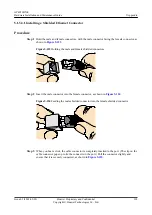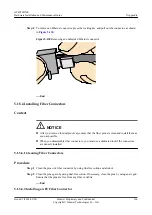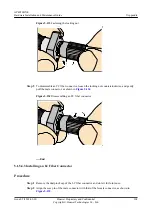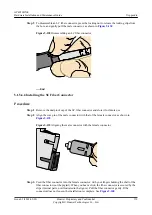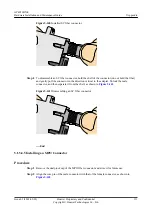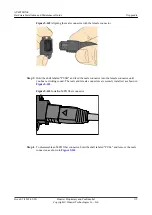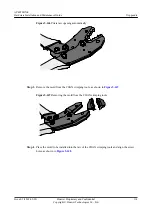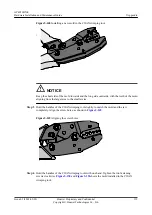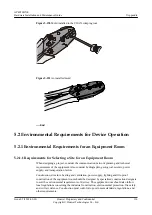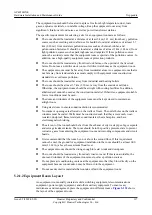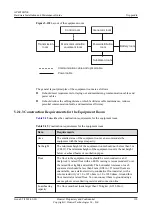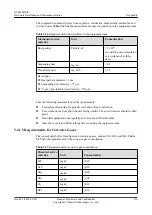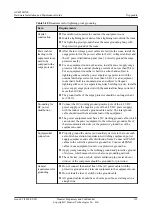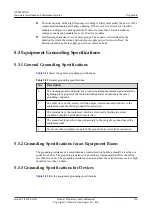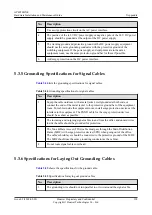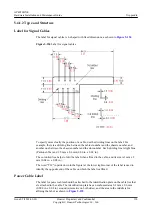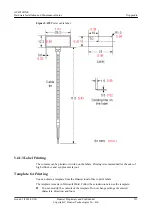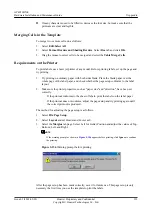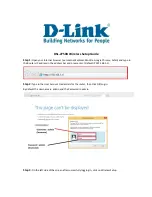
The equipment room should be located in a place free from high temperature, dust, toxic
gases, explosive materials, or unstable voltage. Keep the equipment room away from
significant vibrations or loud noises, as well as power transformer stations.
The specific requirements for selecting a site for an equipment room are as follows:
l
The room should be located at a distance of at least 5 km (3.11 mi.) from heavy pollution
sources such as smelting and coal mines. It should be located at a distance of at least 3.7
km (2.30 mi.) from moderate pollution sources such as chemical, rubber, and
galvanization factories. It should be located at a distance of at least 2 km (1.24 mi.) from
light pollution sources such as packinghouses and tanyards. If these pollution sources
cannot be avoided, ensure that the equipment room is upwind of the pollution sources. In
addition, use a high-quality equipment room or protection products.
l
The room should be located away from livestock farms, or be upwind of the livestock
farms. Do not use an old livestock room or fertilizer warehouse as the equipment room.
l
The equipment room must be far away from residential areas. An equipment room that is
not far away from residential areas must comply with equipment room construction
standards to avoid noise pollution.
l
The room should be located far away from industrial and heating boilers.
l
The room should be at least 3.7 km (2.30 mi.) away from the seaside or salt lake.
Otherwise, the equipment room should be airtight with cooling facilities. In addition,
alkalized soil cannot be used as the construction material. Otherwise, equipment suitable
for wet conditions must be used.
l
The doors and windows of the equipment room must be kept closed to maintain an
airtight room.
l
Using steel doors to ensure sound insulation is recommended.
l
No cracks or openings are allowed on the walls or floors. The outlet holes on the walls or
windows must be sealed. Walls must be constructed such that they are smooth, wear-
resistant, dustproof, flame retardant, sound insulated, heat absorptive, and have
electromagnetic shielding.
l
The air vent of the room should be far from the exhaust of city waste pipes, big cesspools
and sewage treatment tanks. The room should be in the positive pressure state to prevent
corrosive gases from entering the equipment room and corroding components and circuit
boards.
l
It is recommended that the room be on or above the second floor. If this requirement
cannot be met, the ground for equipment installation in the room should be at least 600
mm (23.62 in,) above the maximum flood level.
l
The equipment room should be strong enough to resist winds and downpours.
l
The room should be located away from dusty roads or sand. If this is unavoidable, the
doors and windows of the equipment room must not face pollution sources.
l
Do not place air conditioning vents near the equipment so that they blow directly on the
equipment because condensation may be blown into the equipment.
l
Do not use decorative materials that contain sulfur in the equipment room.
5.2.1.2 Equipment Room Layout
An equipment room usually contains mobile switching equipment, telecommunications
equipment, power supply equipment, and other auxiliary equipment. To ensure easy
maintenance and management, place the equipment in different rooms.
shows
the layout of the equipment room.
AP4050DN-E
Hardware Installation and Maintenance Guide
5 Appendix
Issue 05 (2018-02-02)
Huawei Proprietary and Confidential
Copyright © Huawei Technologies Co., Ltd.
117

